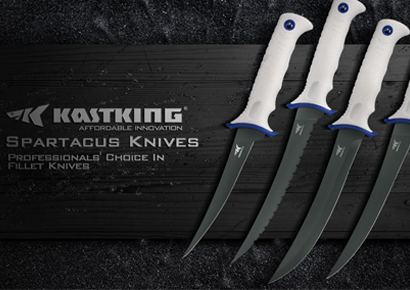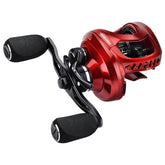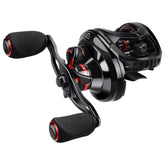
What Is The Blade Material On The Kastking Spartacus Fillet Knives?
There are many different alloys used to make fillet knife blades. Some improve corrosion resistance, some help with holding an edge longer, and some have more toughness. Let’s take a deeper look into blade materials and KastKing fillet knife blades.
Steel Alloys and Properties
Basic steel is made with iron and carbon. Over the years different elements have been added to steel to increase its hardness and toughness. These added elements have created materials with a wide variety of properties, all in the pursuit of trying to find the right balance of hardness and toughness. There are advantages and disadvantages to adding each element. For example, some alloys will make a blade harder and the harder the material the longer it will hold an edge before sharpening is required. However, the harder the blade the less resistant it is to shock and impact (or toughness). There is a tradeoff, a blade cannot be both harder and tougher. If you make the blade harder then you sacrifice toughness, and if you make blade tougher then you give up hardness. It comes down to choosing the right material for the application.

KastKing Spartacus Blade Material
The KastKing Spartacus fillet knife blades are made with 8Cr14 steel and then coated with a Cerakote Ceramic finish.
8Cr14 is an alloy which consists of 0.8% carbon and 14% chromium. All steel will have some amount of carbon which is the most important element for hardness, but more hardness means reduced toughness. A higher carbon content helps to reduce the amount a knife will wear over time thus extending the time before the blade needs to be sharpened. The amount of carbon in a blade can tell you a lot about the quality of the steel. Low carbon means there is 0.3% or less, medium has 0.4-0.7% carbon, and 0.8% or more is considered to be high carbon steel.

Stainless steel knives typically contain a minimum of 12% chromium, this helps to combat corrosion and is a key element for the Spartacus fillet knives. Chromium will increase the strength of a knife but adding too much will decrease toughness.
The gray coating on the KastKing Spartacus blade is called Cerakote. Cerakote is a ceramic based finish which can be applied to metals, plastics, polymers, and wood. This unique formulation adds a number of performance properties to the blade such as abrasion resistance, corrosion resistance, chemical resistance, impact resistance, and hardness. Because of its unique properties, Cerakote is widely used as a coating to protect high-end firearms and to increase the life of engine components.

Find the Balance
The key features most anglers are looking for in a fillet knife is a flexible blade, corrosion resistance, and holding an edge. Choosing a fillet knife with the right balance of hardness and toughness can be accomplished by understanding the blade materials and how they affect performance. Make sure you consider the knife blade material and coatings before you purchase your next fillet knife.












